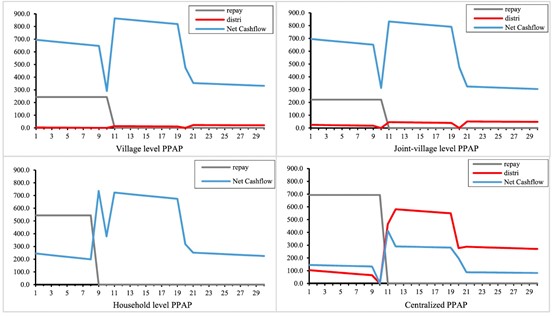
ABSTRACT
The photovoltaic poverty alleviation project (PPAP), as an integration of solar photovoltaics and poverty alleviation, has gained great attention since it was proposed in China. So far, four different modes of PPAP have been formed - household level, village level, jointly-village level, and centralized PPAP. A comprehensive understanding of the effectiveness of different PPAP modes is essential to achieve the aim of getting rid of poverty in Chinese rural areas and to provide references for other developing countries. Therefore, this paper, for the first time, evaluates the economic performance of PPAP under the four modes. By employing cost-benefit analysis, this research elaborates on the effectiveness of PPAP from three aspects e cashflow, net present value, and payback period. The results show that the village level and the jointly-village level PPAP are the most effective modes. However, due to the overplus of installed capacity per household, the centralized PPAP, which is in line with the local governments’ income, becomes the most popular mode. Besides, bank loans can significantly increase the number of benefited households, and the beneficiary ratio is critical to the effectiveness of corporations’ participation.
KEYWORDS
Photovoltaic; Poverty alleviation; Capital; Effectiveness evaluation; Mode
JCR CLASSIFICATION
Q1
Journal of Cleaner Production
https://doi.org/10.1016/j.jclepro.2020.124684
